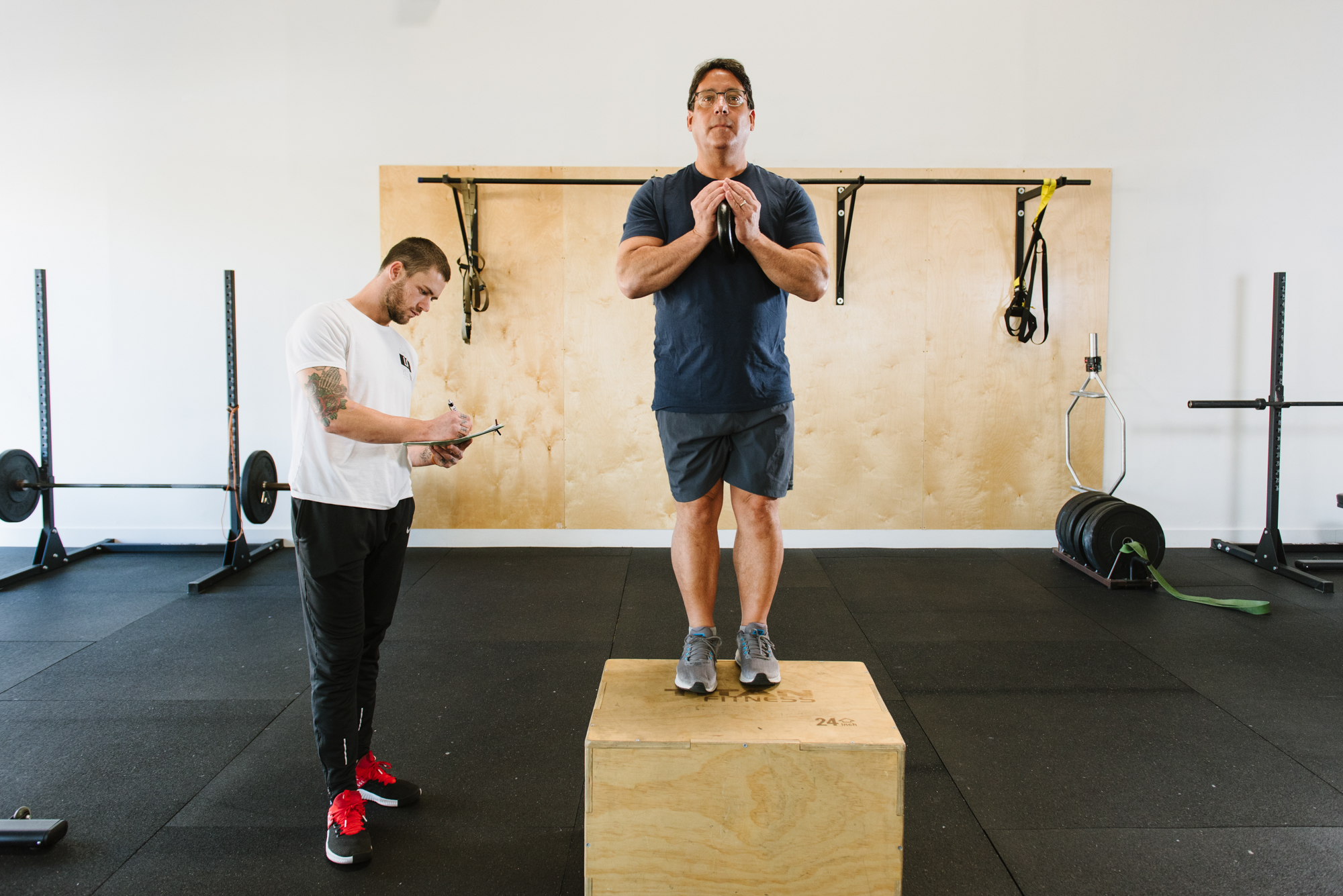“Is there anything you can do to help this pain in my neck.” This is a common request that comes from our newer personal training clients just starting one of our exercise prescriptions. This comment is usually paired with the participant turning around and showing me the spot that hurts. As they struggle to reach their hand back to indicate where the pain is originating from, they turn around and offer me a final eyebrow furrowing grimace of disapproval to the way their body is acting.
We see the goal of “reducing neck and back pain in” often in our initial interviews with beginning personal training clients. These symptoms usually come from people with a profession requiring multiple hours of sitting and looking down at objects. In particular, phones and computers. Doctors, therapists, and teachers look at files, papers, and charts all day. Accountants, executives, and administrative assistants answer emails and enter data in a seated position for hours at a time. Dental assistant, nail salon technicians, and optometrists look at one myopic object and use their tiny tools in their craft. Activities in these lines of work lead to suboptimal posture.
Looking at objects for a long period of time stimulates standing in in a drooped over position with a neck that resembles a candy cane’s shape. Shoulder posture is usually overlooked as they begin to hunch forward resembling some of the zombies on Michael Jackson’s thriller music video. Sitting for hours in a chair puts compressive forces on one of the most common sites of injury in the lower back by the lumber and sacral vertebrae. Sometimes the problem doesn’t lie within the compression of the joints. In most cases, the underuse of the structural muscles that hold us upright in optimal alignment is the issue we should pay the most attention to.
Fortunately, if you are a human these solutions can be remedied without the use of surgery, pain medication, or a “hocus pocus” impulse purchase over social media to cure all the pain in the universe. Our muscular system which encompasses every bone in our skeleton is a masterpiece of architecture designed to hold us upright and manage the multitude of physical stresses we face in our everyday lives. In particular, the threat of poor posture. A foundational theme that we always teach our newer personal training clients is the importance of strengthening the muscles that attach to the shoulder blade, or scapula. Acting as a key stone to the highway of muscles that attach to and intersect the upper back and shoulder joint, the scapula has anchor points on the top, right and left sides, in the middle, underneath, and at the bottom. The various muscles originate from other critically important locations in the body assisting in reinforcing the structural integrity of the torso and cranium. The latissimus dorsi originates at the lower back and attaches to the lateral portion of the scapula and humerus. The trapezius is a large, inverted rhombus shaped muscle with multiple attachment points to the from the spine, rib cage, scapula and humerus. The subscapularis muscle is a muscle located underneath the scapula responsible for reinforcing the rotator cuff of the shoulder. The lower back, ribs, rotator cuff, upper back, and neck vertebrae are just a few noteworthy sites that are reinforced by the muscles of scapular stabilization. Therefore, it’s critically important to focus on the health and activity of these muscle groups to evade nagging neck, shoulder, and lower back injuries.
We don’t need an anatomy lesson on what holds what together. However, understanding the importance of the muscles around the scapula helps us to appreciate how critical this is to our livelihood. A cue we teach our new personal training clients is to “park the shoulder blades.” We instruct clients to pull their shoulder blades downward as if they are performing the antithesis of a shrugging motion. Simultaneously, we cue the retraction of the shoulder blades which means to pull the shoulder blades inward toward the spine. The combination of these two movements activate the muscles responsible for keeping our body in proper alignment and reinforce optimal posture throughout the day.
An issue we have in our everyday jobs that pose a threat to the integrity of our posture is that we simply forget. Who is going to remember to “park their shoulder blades” for 8-10 hours a day? I teach people to this movement for 40 hours a week and I forget. However, adherence to exercise is something that we can more easily manage. Take some time throughout the week and spend special attention on the muscles attached to the shoulder blade. If we can exercise 2-3 times a week and strengthen the muscles of scapular stabilization, we can alleviate the many problems associated with neck and shoulder pain.
Sean McCawley, the founder and owner of Napa Tenacious Fitness in Napa, CA, welcomes questions and comments. Reach him at 707-287-2727, napatenacious@gmail.com or visit the website napatenaciousfitness.com.

